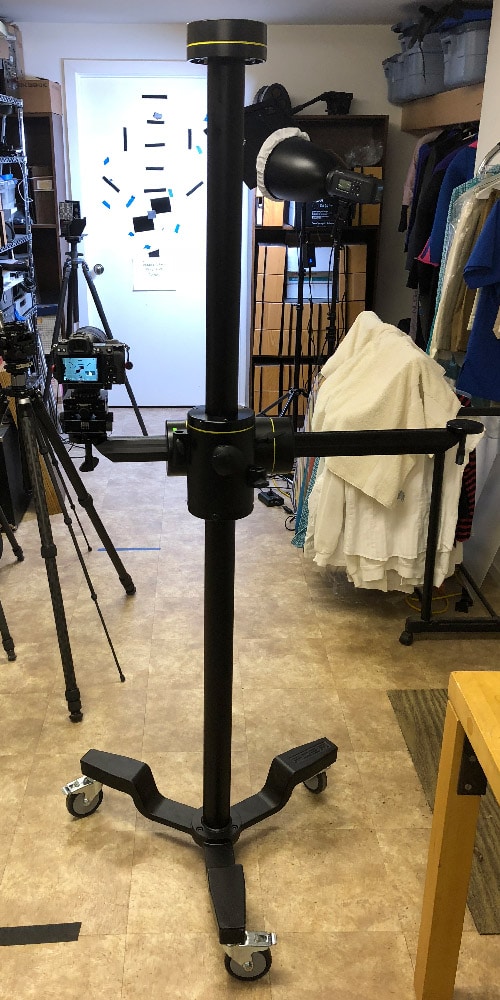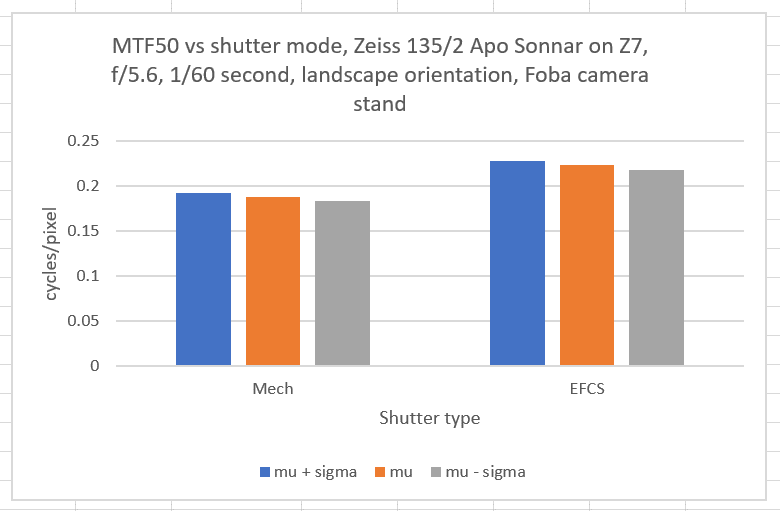This is one in a series of posts on the Nikon Z7. You should be able to find all the posts about that camera in the Category List on the right sidebar, below the Articles widget. There’s a drop-down menu there that you can use to get to all the posts in this series; just look for “Nikon Z6/7”.
Yesterday I took a look at the Nikon Z7 shutter shock with a nice heavy carbon fiber tripod. The day before, I used a skinny travel carbon fiber tripod. Both evinced shutter shock with the all mechanical shutter, but not with either EFCS or the electronic shutter (ES). The shutter shock was worse with the small travel tripod.
Since beefing up the tripod lessened the blur, I wondered if using a really stable support would eliminate it.
So here’s how I set up the camera for today’s test:
This Foba stand is light as such things go, but it still weighs about 150 pounds. It is quite stiff.
I put a Zeiss 135 mm f/2 Apo-Sonnar ZF.2 on a FTZ adapter and attached it to the Z7. I set the aperture to f/5.6, and the shutter speed to 1/60. I focused and made 32 exposures 3 seconds apart using the built-in intervalometer with the mechanical shutter and with EFCS, with IBIS set off in all cases. I developed the images in dcraw and computed the MTF50 values in cycles per pixel for the horizontal slanted edges. Then I computed the average and standard deviation for all three shutter modes. Here are the averages (aka mu values), and the average plus one standard deviation (mu + sigma) and the average minus one standard deviation (mu – sigma) values.
As you can see, beefing up the camera support can reduce the blurring effect of the mechanical shutter, but it can’t make it go away completely. So, if you don’t want to use EFCS and want sharp pictures, you should run right out and get one of the 340-pound Foba stands. It shouldn’t set you back much more than ten thou. If that sounds unappealing, you could turn on EFCS.


I’m surprised that there wasn’t already diminishing returns after switching to the beefy tripod. This is a bigger difference than I expected.
I was thinking that the camera-to-plate connection would be a limiting factor already, but I guess not… maybe with the camera stand it is. Or is this the FTZ you mounted to the tripod, not the camera?
Yes, I clipped the FTZ into the head. It’s been that way for all the tests with the 135. Maybe clipping in to the camera would have been better, but I don’t think most people would use a heavy lens like the Apo-Sonnar that way.
So,
That means legs matter more than head?
In this case, that appears to be the case.